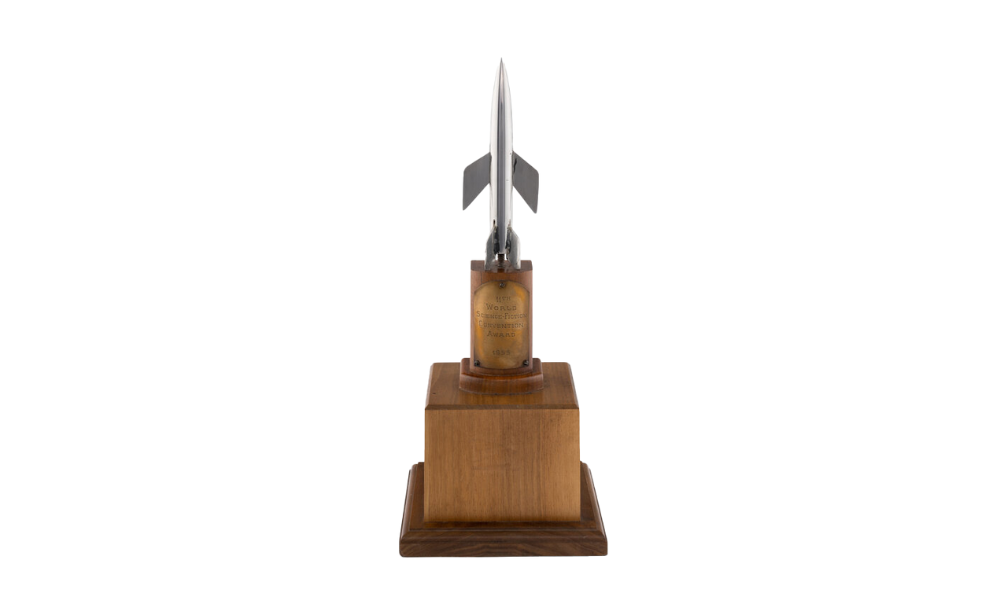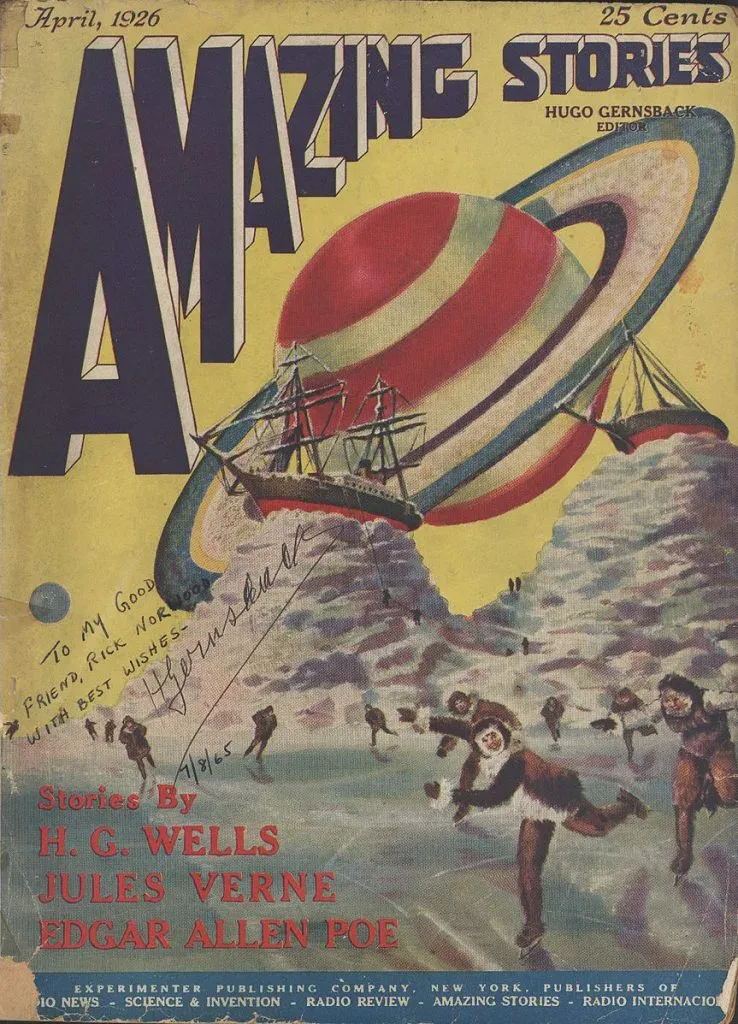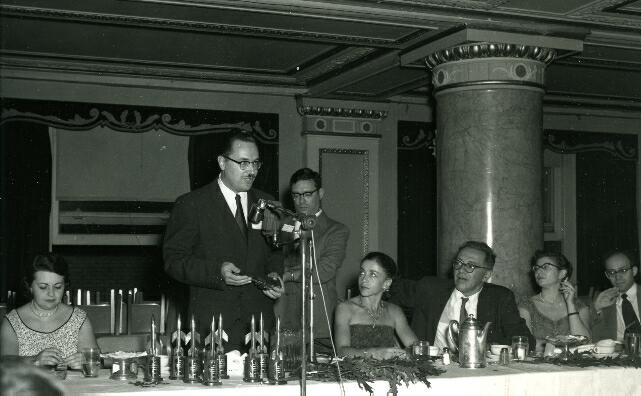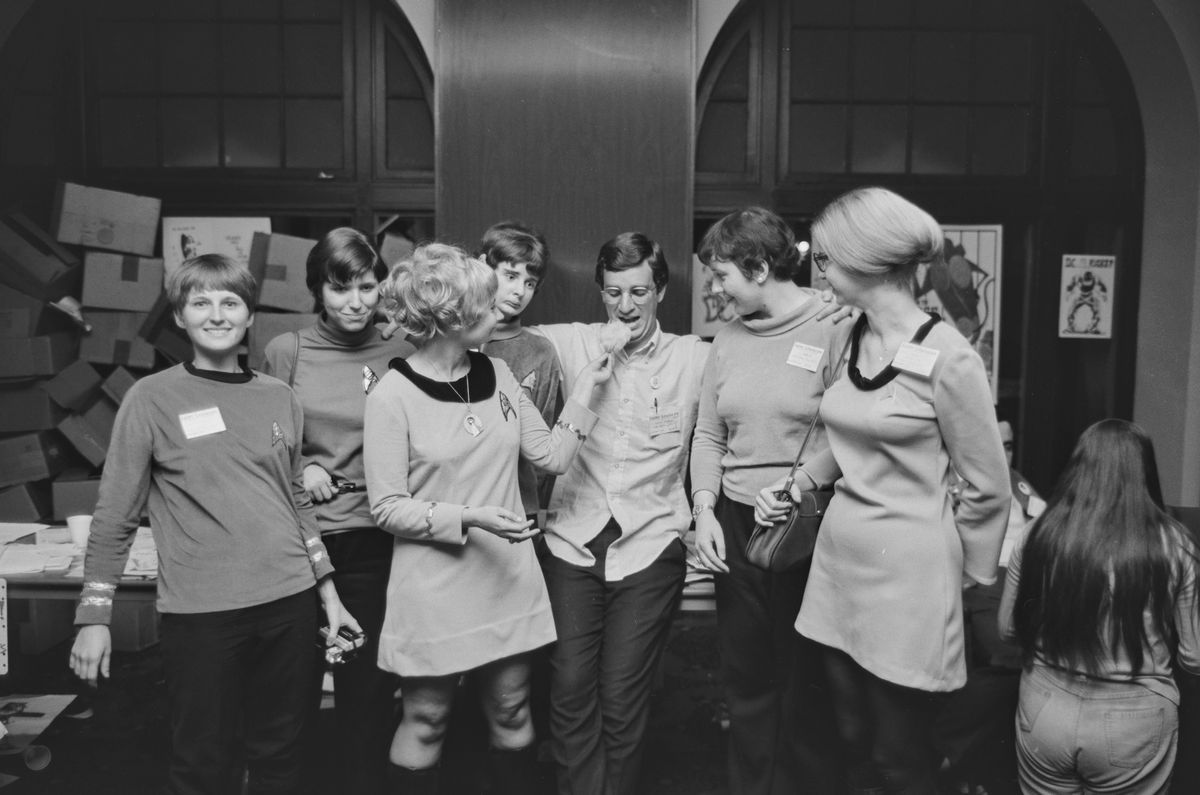Want to own a piece of SF history?
One of the first-ever Hugo Awards is up for auction. It comes with a complicated legacy.

For a number of years, I wrote a column on Kirkus Reviews about the history of science fiction, and over the course of that run, I wrote about a ton of authors and the community's institutions, like birth of the World Science Fiction Convention and notable incidents, like the 1987 Hugo Awards.
Science Fiction history is something I'm still deeply interested in (ahem), and that's why word of an auction caught my eye: amongst the items up for grabs? One of the first-ever Hugo Award statues. It's a notable and significant item within the genre community's history, but it also comes with some notable complications.
SF fandom established itself alongside the rise of pulp magazines in the 1920s and 1930s, and in 1939, fans gathered in the first World Science Fiction Convention in New York City. The tradition continued, jumping from city to city around the United States, and in 1953 settled in Philadelphia for PhilCon II.
In the months ahead of the event, the convention's organizers announced that they would host the first ever "Science Fiction Achievement Awards," which members would be awarded to "those writers, editors, artists and fans whom the members of Convention feel have distinguished themselves during the past year." In a followup convention report, George J. Viksnins revealed that the awards were suggested by Harold Lynch, a member of the publicity committee, and who went on to serve as the award's chairman.

The categories that year included prizes for the best novel, short story or novelette, "fan personality," professional magazine, cover painting, interior illustrations, fan magazine, fact article, and "new discovery." The convention progress report included a ballot for members to fill out and mail in prior to the convention.
The convention's next progress report arrived in August, and organizers trumpeted some of the early results: Alfred Bester's novel Demolished Man was a leading favorite, while "old-timer" Forrest Ackerman and "new-timer" Harlan Ellison were tied for favorite fan.

The awards were formally announced on September 6th, with Isaac Asimov serving as toastmaster and Willy Ley as guest of honor. Ackerman ultimately took home the award for #1 Fan Personality. (Interestingly, it looks as though the con dropped two categories: Best Short Story or Novelette and Fan Magazine, because none of the submissions garnered a majority).
The organizers of the following year's convention, SF Con, opted not to hold the awards (the progress reports don't provide a reason), but the 1955 WorldCon, Clevention, brought them back. The prize has been awarded annually ever since, and would eventually adopt its informal nickname, the "Hugo" years later.
The novelty of a "first" is what makes this particular award statue such a cool find: the Hugo Awards are a pillar within the SF community, and despite some of the recent drama and controversies that have arisen in recent years, those who've won the award are in rarified air.
What makes this particular item notable is that it was awarded to Ackerman, who'd remained an enormous presence within the SF community since its beginning, and it serves as a good indicator of how intertwined the fan and professional communities were. Ackerman was also notably one of the early figures in fandom to begin wearing costumes to conventions, helping to kick off what we now know as cosplay.

There are some serious complications to Ackerman's story: he amassed a number of accounts within fandom of some pretty toxic behavior towards women. It's a significant asterisk that shouldn't be overlooked and should be folded into the larger story of this era of fandom and the people in it.
This particular statue is a small representative example of that history: one that celebrates both the fans and professionals who created and incubated some incredible stories, but also complicated and toxic elements that existed within fandom. We can't choose our predecessors, but we can learn from their examples and try and do better.
Hopefully, this statue will go to good home. I'm a bit biased because I work at a historical society, but this is the ideal item for such an organization: one that can preserve it for posterity, but also interpret its place in the larger story of science fiction culture.
The auction site estimates that this item will go for somewhere between $5000 and $7000, and the auction closes on Friday, June 7th at 9:00AM CT. It seems to be part of a much larger body of Ackerman's collection, and includes another Hugo Award, one given to the award's namesake, Hugo Gernsback, in 1960.